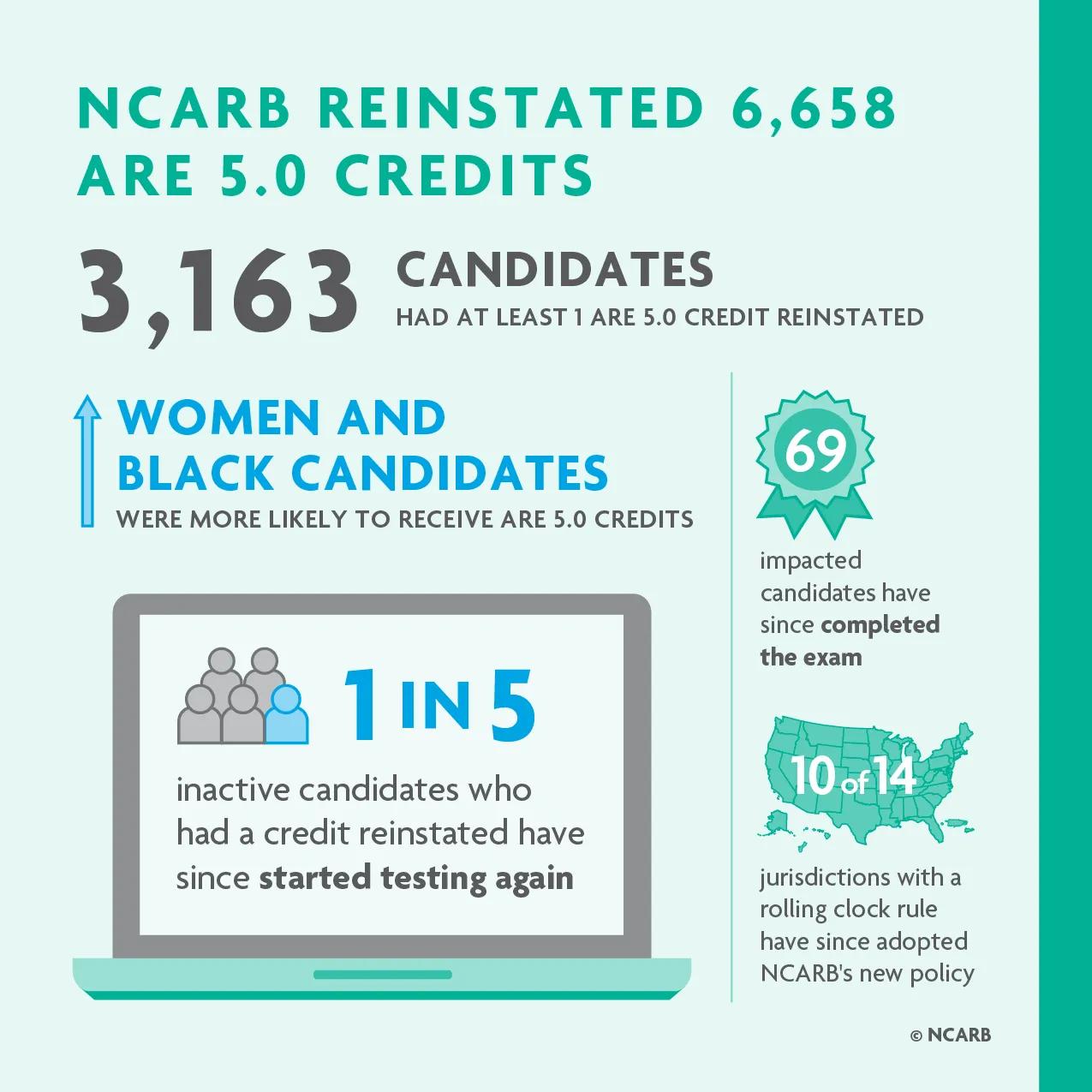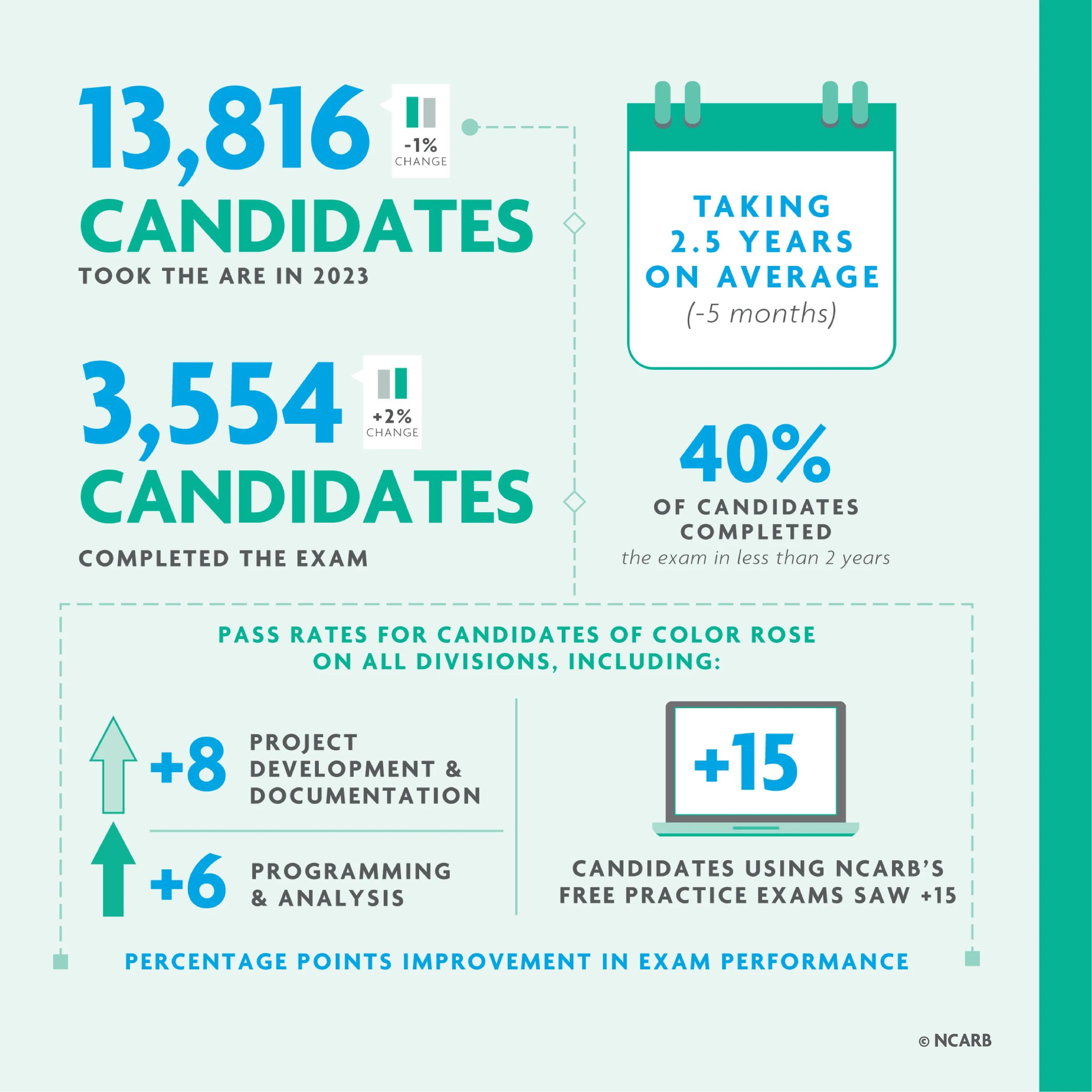
NCARB’s Architect Registration Examination® (ARE®) is a six-part exam required to become an architect in the United States. For most candidates, taking the ARE is the final step on the path to licensure.
In 2023, the exam continued to see a slight recovery from the impact of the COVID-19 pandemic. Over 3,500 candidates completed the ARE, a 2% increase compared to the prior year. 2023 also saw a faster exam completion time and higher exam pass rates.

Over the past several years, NCARB has been implementing changes to improve the equity and accessibility of the ARE: creating free practice exams for candidates, offering one free reschedule for exam appointments, offering accommodations for ESL candidates, and, most importantly, retiring the ARE’s rolling clock policy. The rolling clock placed a 5-year expiration date on passed exam divisions, a policy that was found to disproportionately impact women and people of color. When NCARB retired the rolling clock, over 6,600 previously expired exam divisions were reinstated, bringing 3,000 candidates one step closer to becoming licensed architects.
As a result of these efforts, pass rates rose by 3% in 2023, the largest increase ARE 5.0 has ever seen. Nearly 80% of candidates are now using NCARB’s free practice exams prior to testing—and the results are positive. Candidates who use NCARB’s practice exams perform 15 percentage points better than those who don’t. While NCARB continues to see a disparity in pass rates between white candidates and candidates of color, recent changes are helping to close the gap over time.
Over 3,500 candidates completed the exam in 2023.
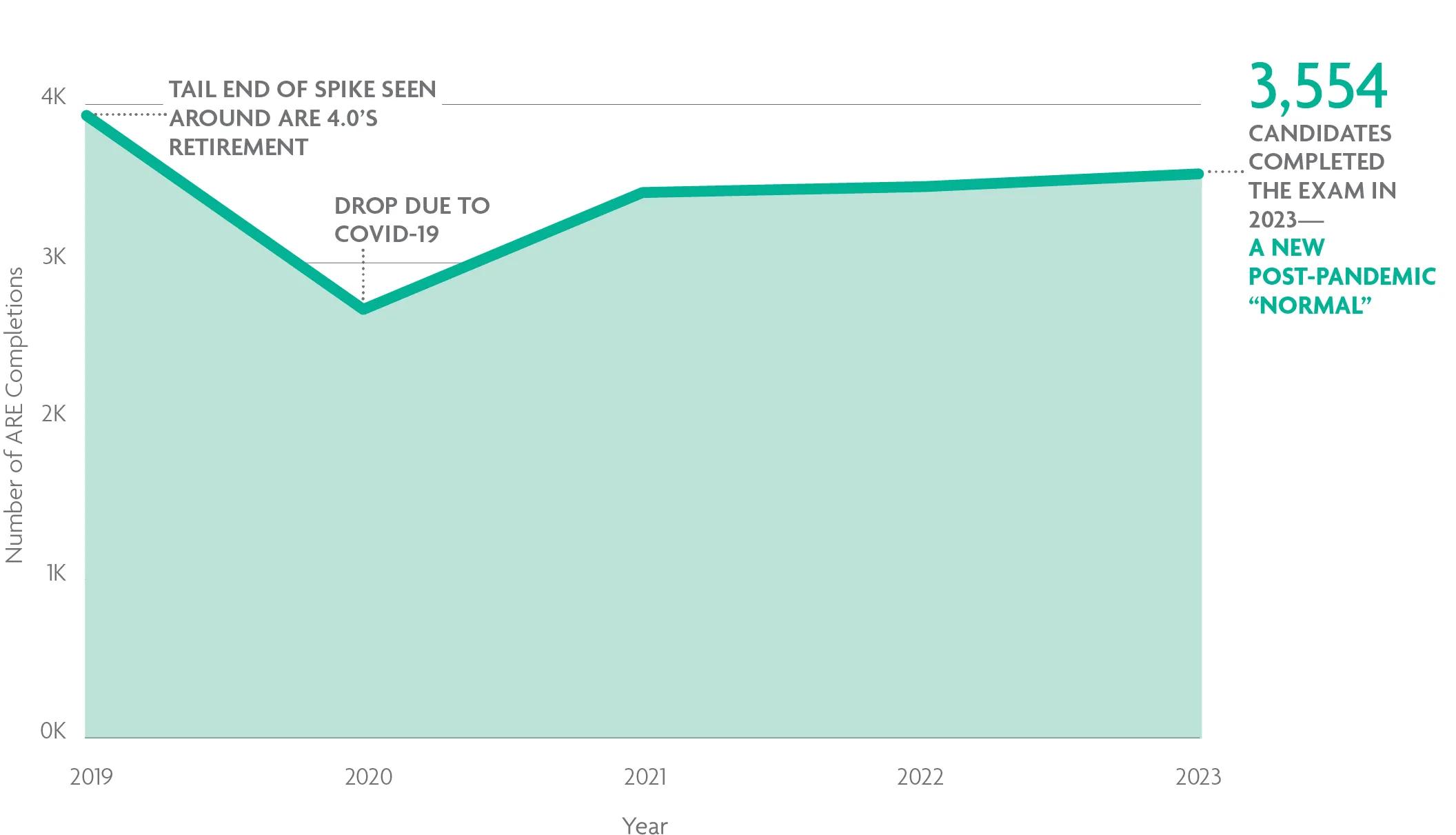
The number of individuals completing the ARE has fluctuated over the past decade as candidates navigated the launch of a new exam version, policy updates, and a global pandemic. But recently, ARE completions appear to have stabilized, with roughly 3,500 candidates finishing the exam each year from 2021-2023.
Prior to 2020’s dramatic dip in ARE completions (a result of the COVID-19 pandemic), more candidates than ever completed the program in 2015-2018, most likely rushing to finish testing around the retirement of ARE 4.0.
It’s uncertain how the retirement of the rolling clock policy will impact ARE completions going forward—while some candidates might slow their testing progress without a time restriction, candidates who were previously at risk for losing exam credits due to the policy might now be more likely to finish the ARE.
Candidates finished the exam 5 months faster in 2023.
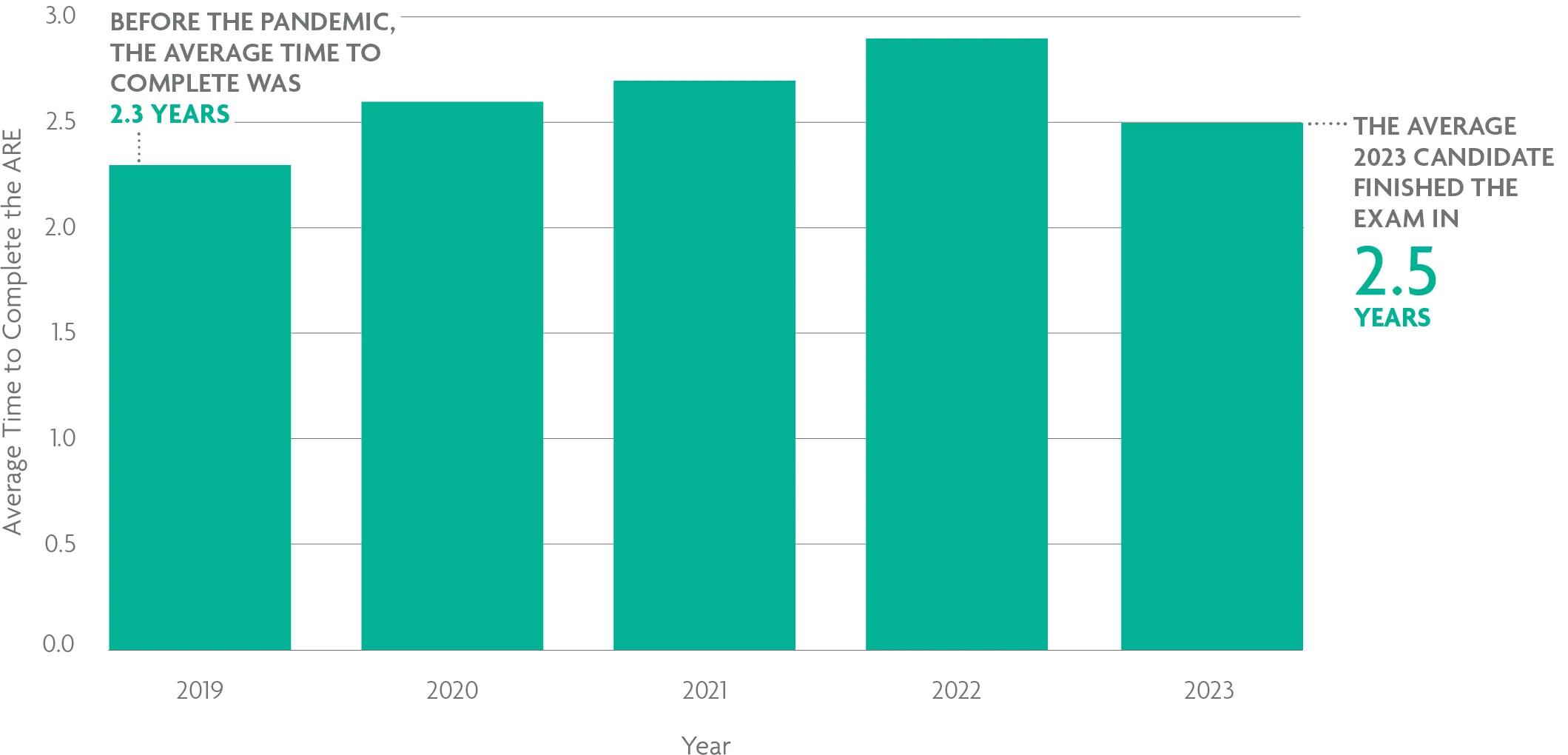
On average, candidates who completed the ARE in 2023 took 2.5 years. The 5-month decrease from 2022 in time spent testing brings 2023’s average much closer to pre-pandemic numbers—and with good reason.
With 2.5 years between the first and last test, the typical candidates who finished the exam in 2023 would have started testing in 2021, after the brunt of the pandemic’s impact on the exam had passed.
Plus, candidates are completing ARE 5.0 in less time than the exam’s previous version. Candidates who only tested in ARE 5.0 finished the exam in just 1.9 years. For comparison, the average candidate who only tested in ARE 4.0 (prior to 4.0’s retirement in 2018) took 2.5 years to complete the exam.
DID YOU KNOW? Averages can be measured in several ways. NCARB uses median to measure averages throughout NCARB by the Numbers, which allows us to avoid skewing the average with outlier data points.
More candidates are finishing the exam in less than two years.
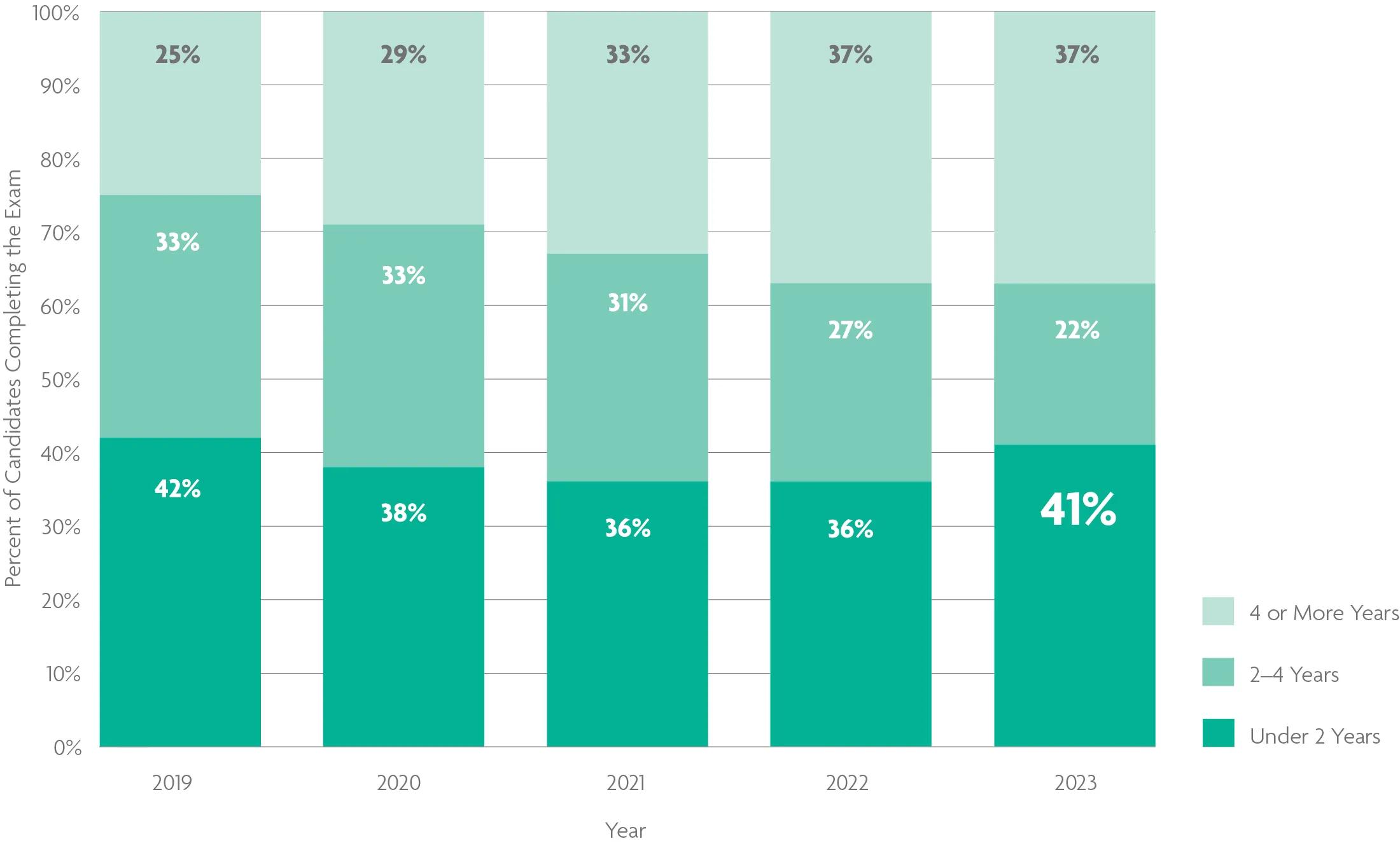
2023 saw an increase in candidates completing the exam in a shorter time frame—41% of candidates who finished the exam in 2023 took under 2 years to do so, compared to 36% in 2022.
The proportion of candidates taking 4 or more years to complete the exam held steady at 37%. On May 1, 2023, NCARB retired the rolling clock policy, reinstating expired exam divisions that were older than 5 years for thousands of candidates. We are likely to see an increase in the proportion of candidates taking 4 or more years to complete the ARE in 2024 as those individuals return to the licensure path and finish testing.
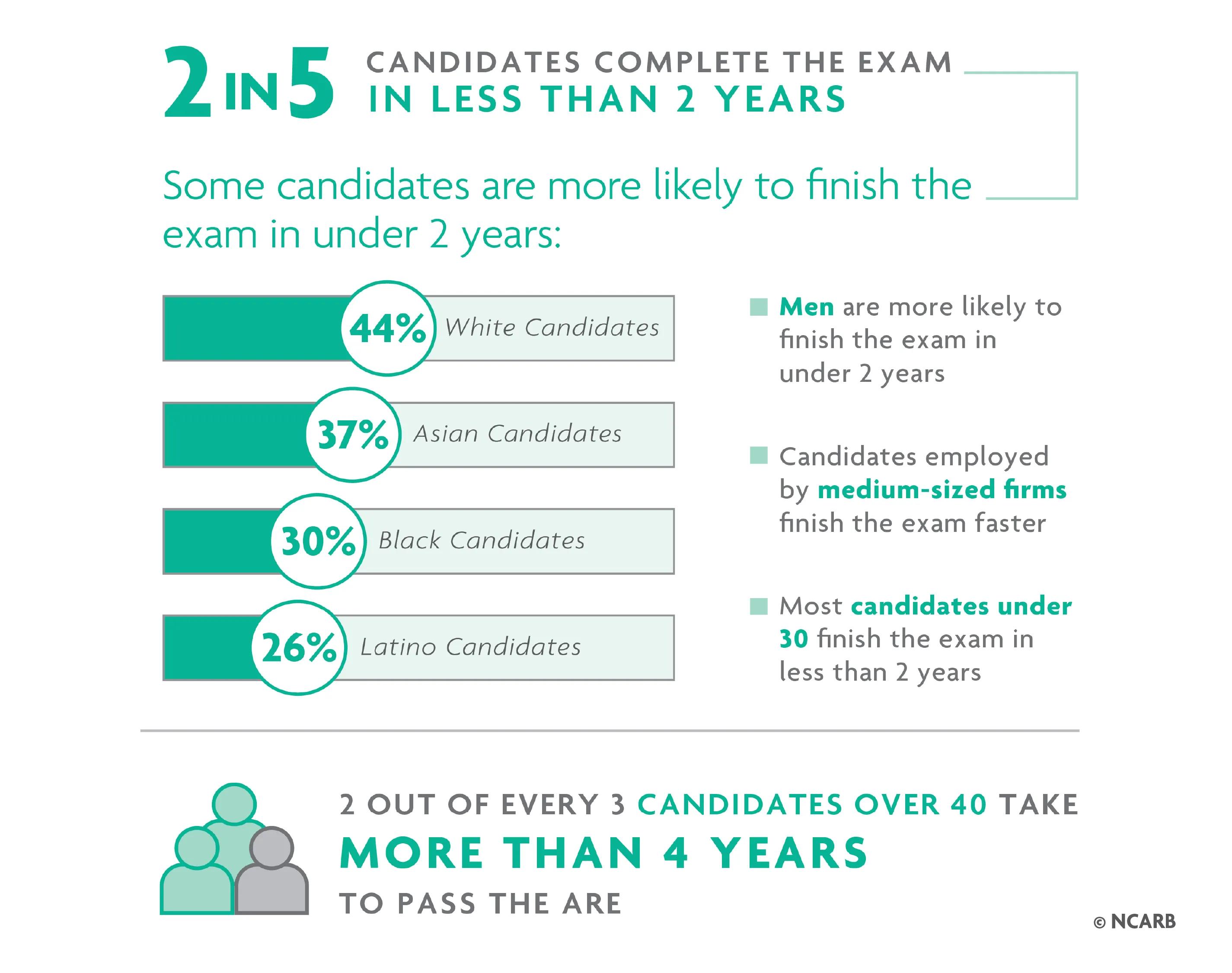
Candidates took more than 39,000 exam divisions in 2023.
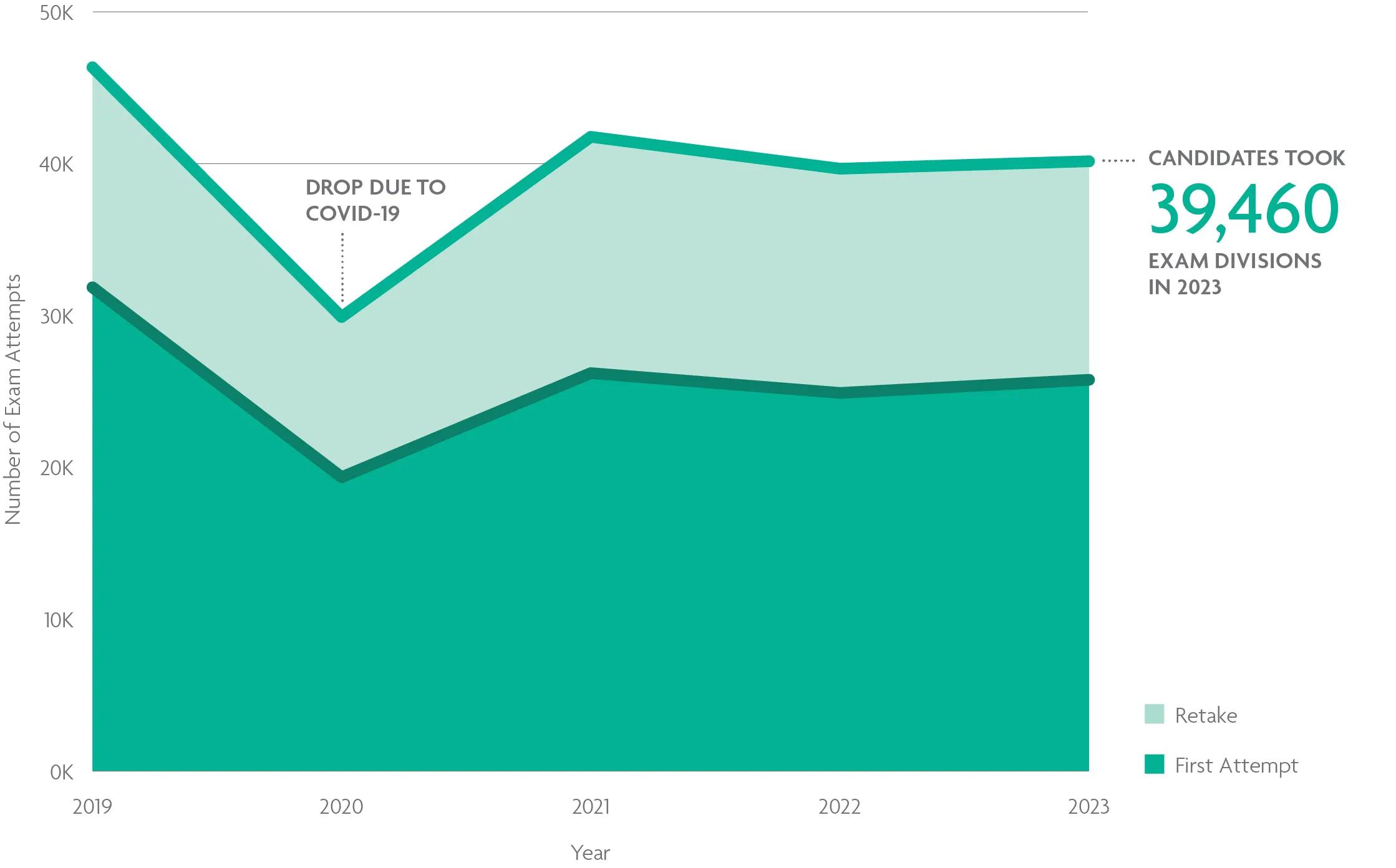
Like the number of exam completions, the number of ARE divisions taken in 2023 rose slightly (2%) compared to 2022. Approximately 64% of all exams administered were first attempts, while the remaining 36% were retakes of previously failed divisions.
Of the 39,460 ARE divisions taken in 2023, more than 8,500 were in the Practice Management division.
Though candidates can take the divisions in any order, many candidates start their exam journey with Practice Management, which is typically listed first in NCARB’s materials. The next most-taken division was Project Planning & Design, which has the highest number of retakes out of the 6 divisions.
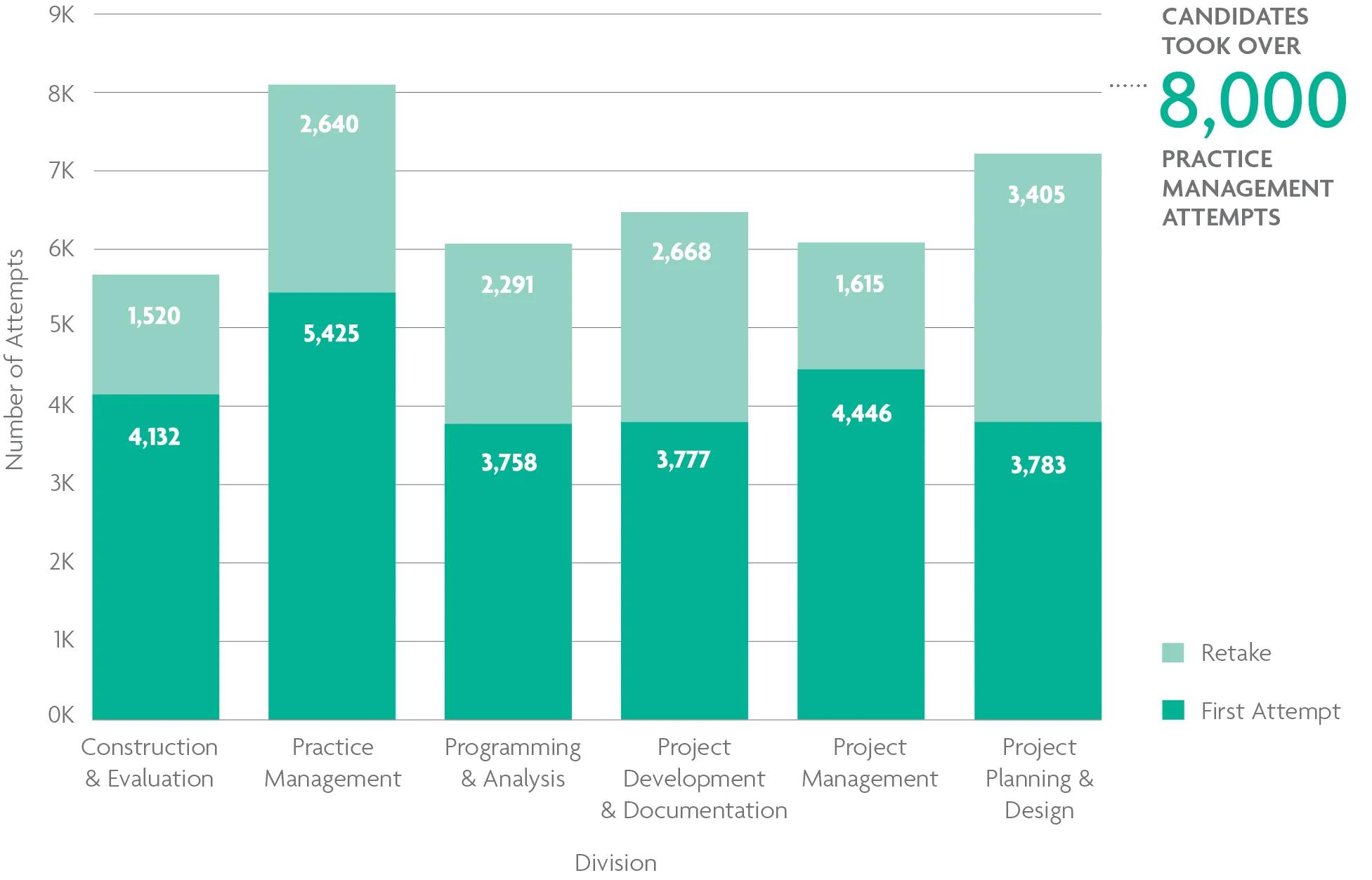
DID YOU KNOW? Although the majority of candidates start with the Practice Management division, NCARB’s data suggests that candidates who start with Project Management have higher overall pass rates.
Exam pass rates are improving.
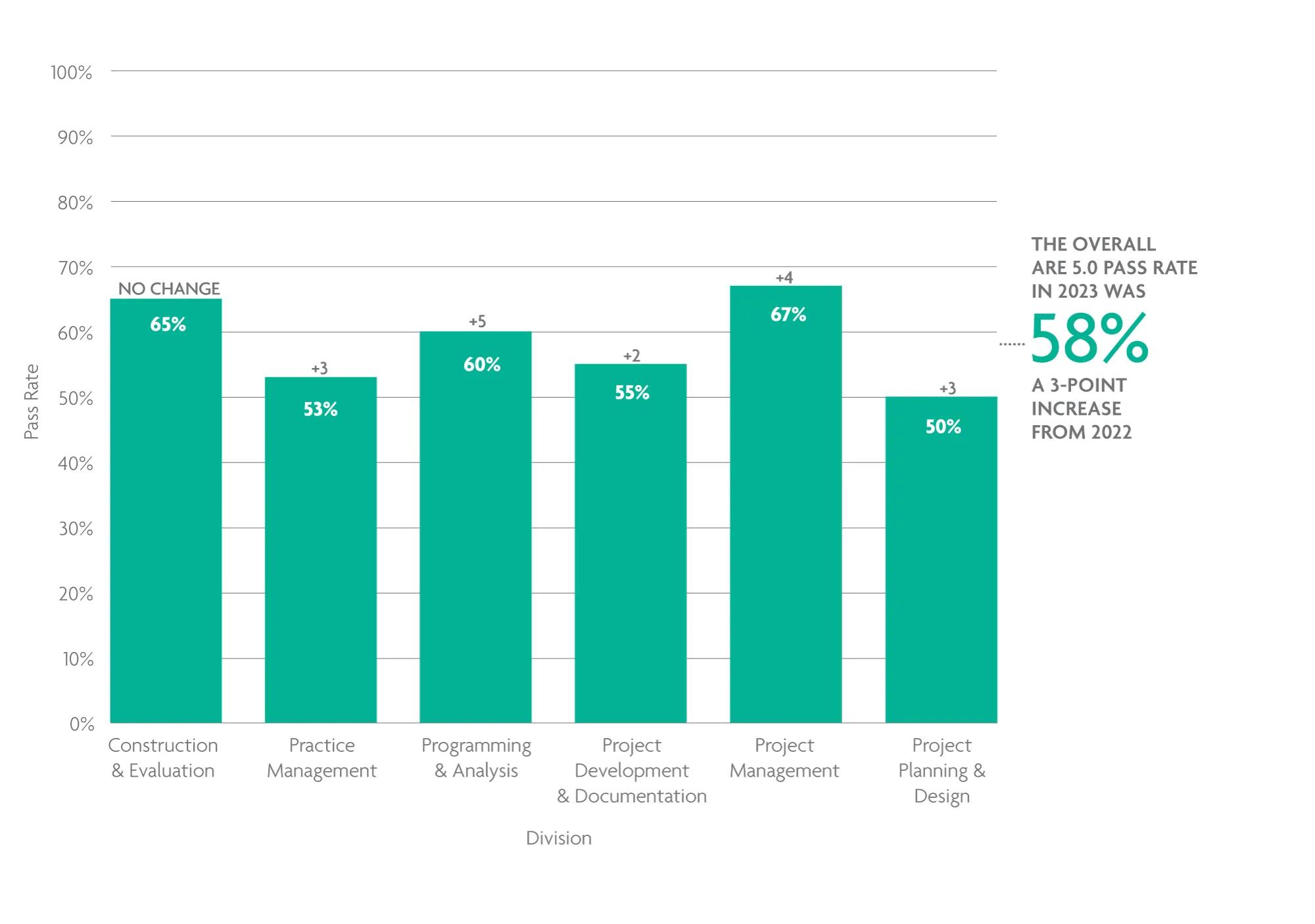
Candidates performed better on 5 of the 6 ARE divisions in 2023. Overall pass rates across all 6 divisions increased by 3 percentage points to 58%—the biggest change in pass rates seen since ARE 5.0’s introduction in 2016.
Pass rates for the Programming & Analysis division increased by 5 percentage points, the largest increase across all divisions. Project Management had the highest pass rate of all divisions at 67%.
NCARB’s free practice exams have helped drive this positive change, providing candidates with greater insight into the testing experience.
White men have the highest pass rate on all exam divisions.
While exam pass rates are generally increasing, they remain higher for white candidates than for candidates of color. White men continued to have the highest pass rate on all ARE 5.0 divisions in 2023, while Black or African American men had the lowest. Despite the continued disparity in pass rates, candidates of color did see an increase in pass rates on most exam divisions compared to 2022, often by 5-10 percentage points.
Aside from white candidates, Asian candidates are the only other race or ethnicity to score above-average pass rates on some (but not all) ARE divisions. And while white and Latina women typically have lower pass rates than their male peers, the opposite is true for Black and Asian women, who often outperform men of the same race.
- The pass rate disparity is largest for the Programming & Analysis division
- And smallest for the Practice Management division
- White men perform 5-13 percentage points above the national average
Candidates who use NCARB’s practice exams are more likely to pass the ARE.
Overall, candidates who take one of NCARB’s free practice exams before attempting the related division are 15 percentage points more likely to succeed. This ranges anywhere from 11-18 percentage points, depending on the division. Performance improved most for candidates taking the Practice and Project Management divisions.
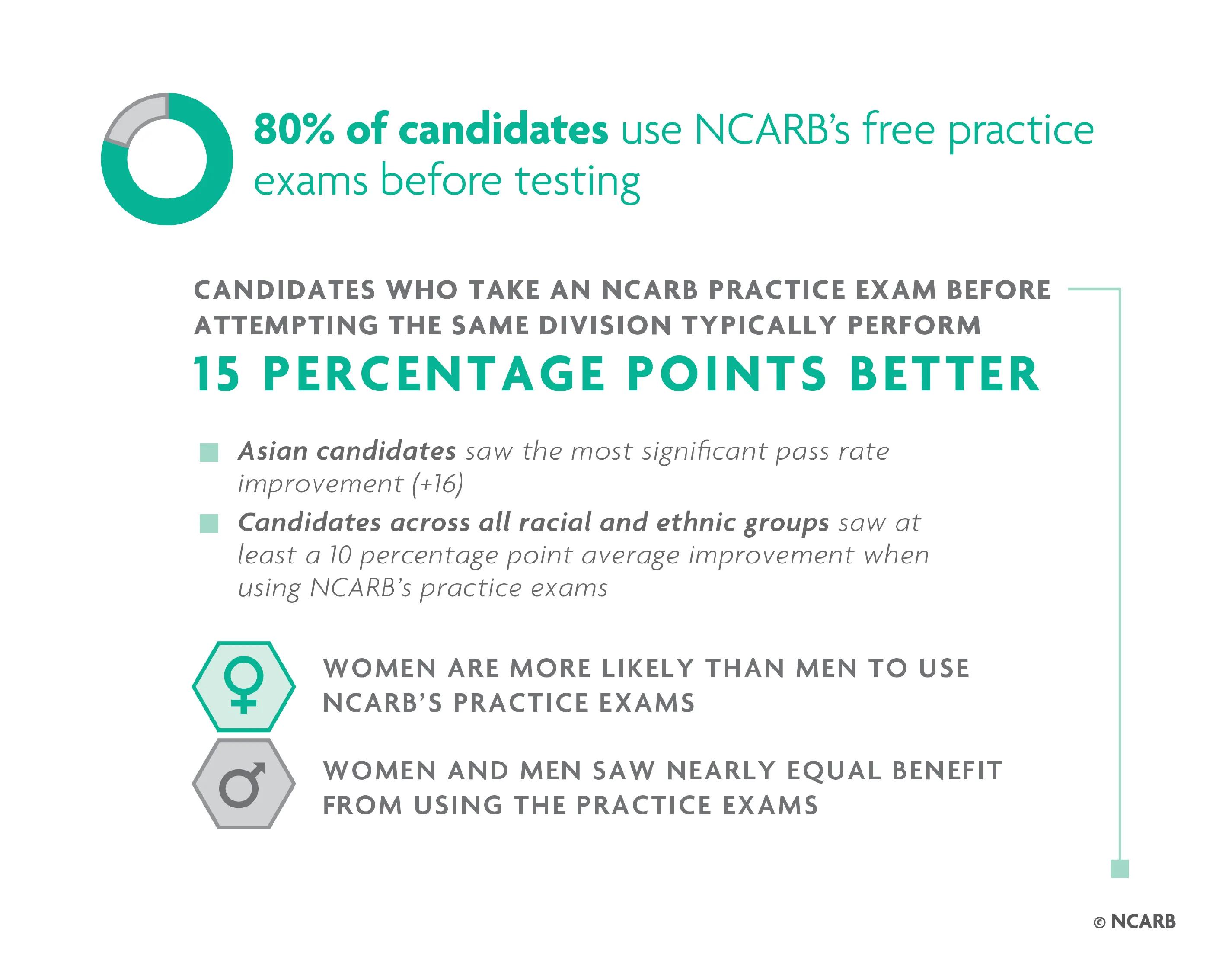
ARE practice exams are offered by a number of test prep providers, so why are NCARB’s so impactful? In addition to being free, the practice exams are written similarly to the real exam, and NCARB provides rationale explaining why the answer is correct. Combined, these features help candidates better understand what kind of answers NCARB is looking for on the real thing.
Fewer candidates are overlapping the AXP and ARE.
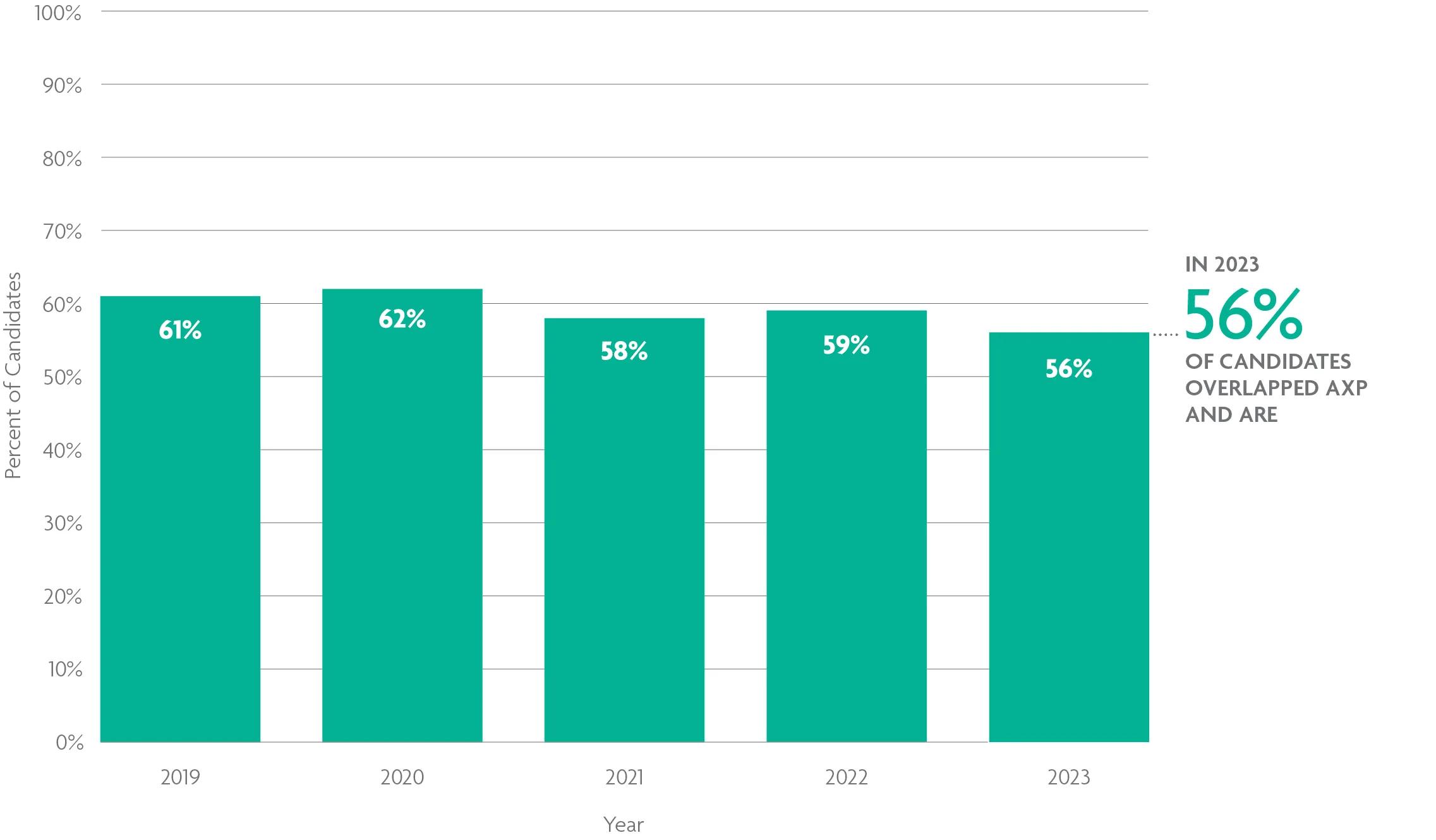
Although the AXP’s experience areas and ARE 5.0’s divisions were intentionally designed to align with each other, the percentage of candidates who overlap the programs has been steadily declining since the AXP and ARE 5.0 launched in 2016.
In 2023, 56% of candidates took at least one ARE division while they were still working toward completing the AXP, compared to 61% in 2019 and 65% in 2016.
When should you test? NCARB’s data suggests the sweet spot is 0-3 months after completing the related AXP area.
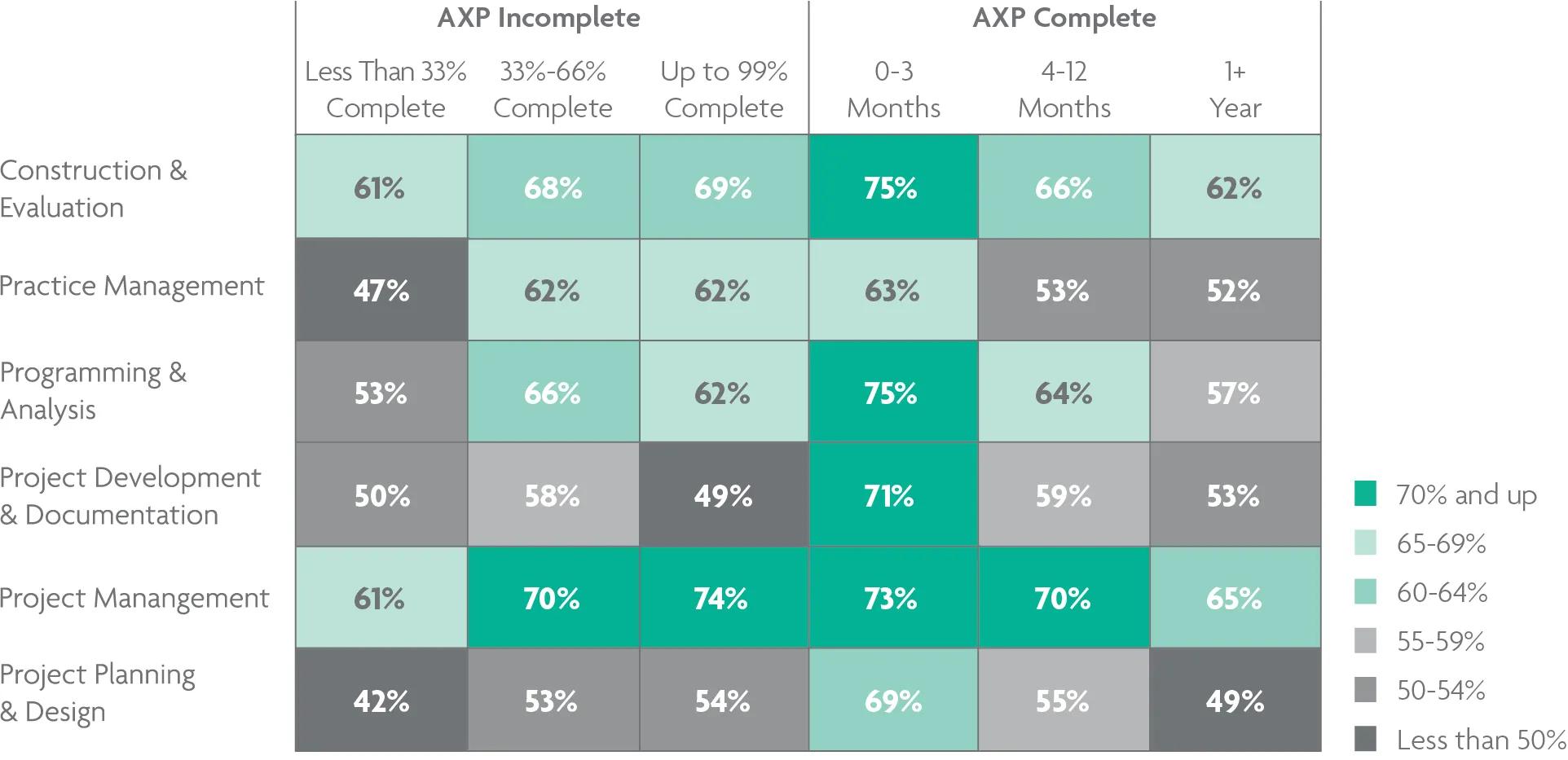
Candidates preparing to take the ARE should plan to test at the time that best meets their needs—whether that’s based on finances, bandwidth, preparation, or other factors. But one more element candidates might want to factor in is AXP experience: NCARB’s data indicates that candidates perform better on the exam when they take an ARE division immediately after finishing the related AXP experience area.
What does this mean for candidates? Currently, most candidates wait a year or more after finishing the related AXP area before taking an ARE division. However, pass rates at that point are up to 20 percentage points lower.
The ARE is designed to reflect day-to-day practice, so testing while related experience in that area is fresh might help candidates connect the exam to the real world.
NCARB restored over 6,600 ARE 5.0 credits as part of the rolling clock retirement.
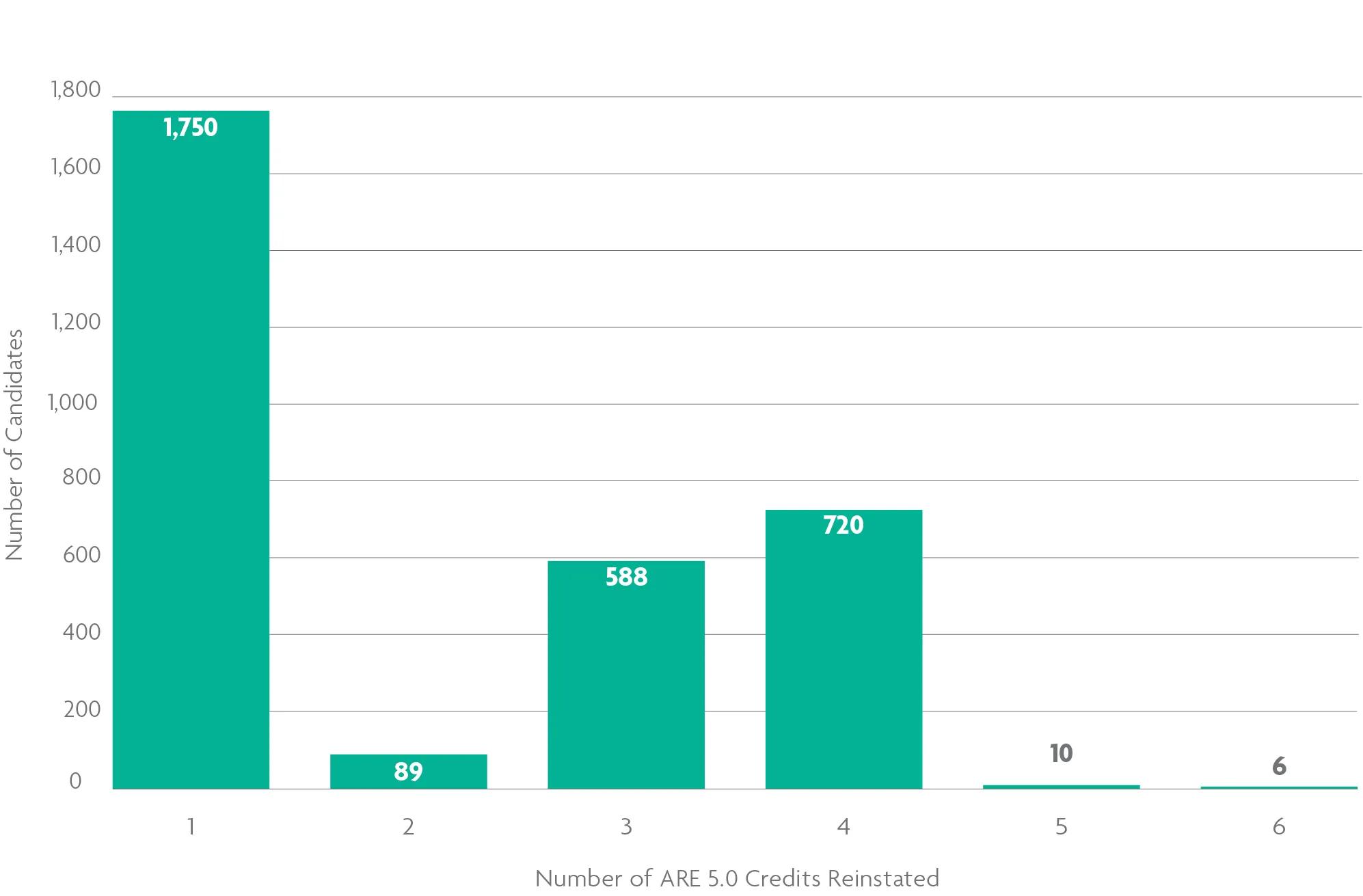
On May 1, 2023, NCARB replaced the exam’s rolling clock policy—which placed a 5-year expiration date on passed exam divisions—with a new score validity policy. Under the new policy, passed exam divisions will remain valid throughout the delivery of the exam version under which it was taken, as well as the next exam version. Analysis showed that the rolling clock disproportionally impacted women and people of color, and that the new policy is both more equitable and more effective.
When the new policy was implemented, NCARB reinstated ARE 5.0 exam credits for exam divisions passed in ARE 4.0. This resulted in 6,658 ARE 5.0 credits being reinstated, impacting 3,163 candidates.
At the time, 14 jurisdictions had implemented a rolling clock policy at the state level, preventing NCARB from reinstating exam divisions for candidates in those jurisdictions. Since then, 12 of those jurisdictions have removed their rolling clock policy, and the remaining 2 are in progress.
